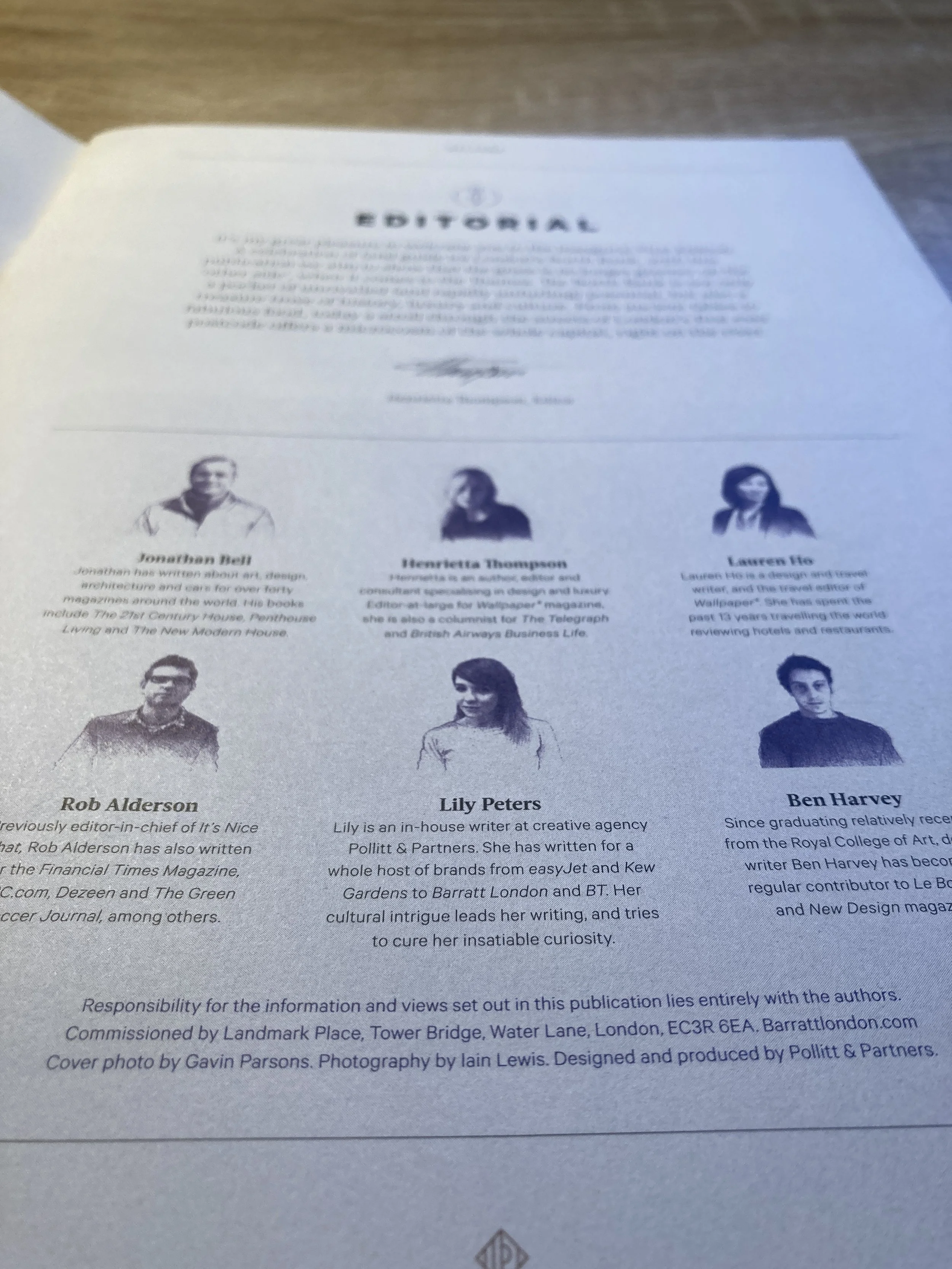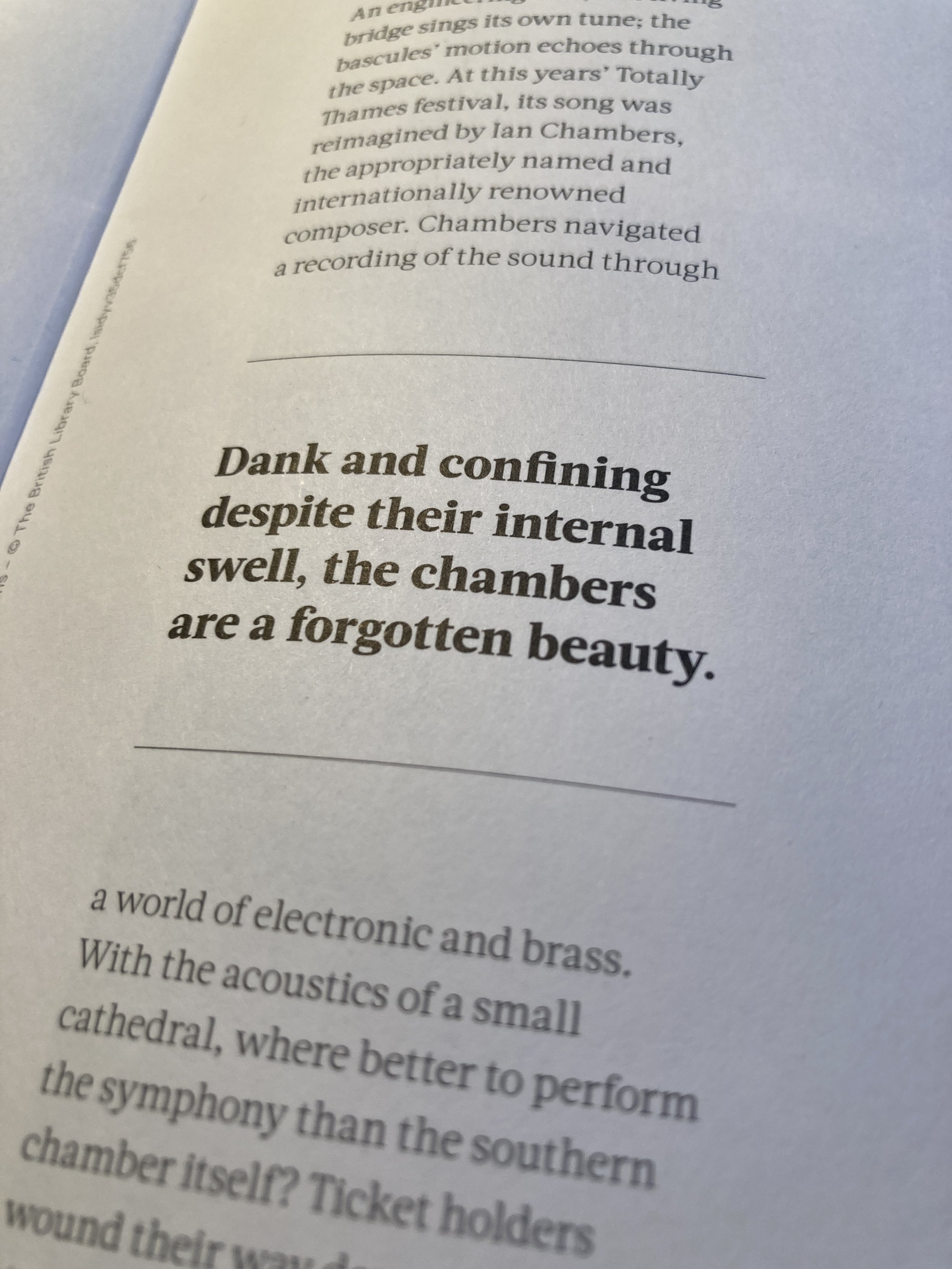FIRST EDITION x LANDMARK PLACE
Landmark Place. An astonishing property set to line the banks of the Thames right by Tower Bridge, where Romans once landed way back in 43AD.
How could this iconic location become a neighbourhood, not a tourist hotspot?
To give prospect buyers a taste of the area, we teamed up with an exceptional writing team, lead by Wallpaper* editor Henrietta Thompson. I stepped into the role of supporting editor, shaping content, proofing submissions, perfecting layouts with our in-house designers and writing my own piece on the mesmerising melodies played the bascules of Tower Bridge itself. Yes – I too hope to attend next time.
Below is my article in full, supported by a suite of key pages.
•••
The ChamberS of Secrets
Deep beneath one of London’s most celebrated landmarks lies an architectural treasure transformeD
As Victorian London became the capital of the industrial world, a river crossing that didn’t disrupt vessels travelling the Thames was vital.
In 1843, the world’s first tunnel under a navigable river opened in the form of Isambard Kingdom Brunel’s Thames Tunnel but when funding fired up, the engineering marvel failed to fulfil its original purpose of caring freight across the river. Instead, tourists came from far and wide to walk the ‘Eighth Wonder of the World’. A second attempt was made in the Tower Subway, which escorted passengers below the Thames by cable car, but little custom and technical difficulties ended this first ever tube railway.
The crossing crisis continued. Short of ideas, the City of London Corporation set a challenging brief: create a system that grants people and road traffic passage, yet allows ships to sail by. From swinging structures to a layered transporter bridge, more than 50 designs were submitted. John Wolfe-Barry and Sir Horace Jones took the medieval drawbridge into the Victorian age, and shaped the Tower Bridge synonymous with London. Both suspension and bascule (French for seesaw), it was the most sophisticated bridge on the Thames.
From swinging structures to a layered transporter bridge, more than 50 designs were submitted.
The bascules work today as they did then: with each scheduled lift, the hydraulic system pivots over 1,000 tons. The mechanism is aided by great counterweights that swing into magnificent underwater spaces: the bascule chambers. These cavernous chambers are shaped like brick amphitheatres, with steps rising sharply from the pit floor. Dank and confining despite their internal swell, the chambers are a forgotten beauty.
Dank and confining despite their internal swell, the chambers are a forgotten beauty.
An engineering icon, this living bridge signs its own tune; the bascules’ motion echoes through the space. At this years’ Totally Thames festival, its song was reimagined by Iain Chambers, the appropriately named and internationally renowned composer. Chambers navigated a recording of the sound through a world of electronic and brass. With the acoustics of a small cathedral, where better to perform the symphony than the southern chamber itself? Ticket holders wound their way down the tight staircase, into the colossal chamber for an enchanting performance. Music filled the room, energising the space almost 200 years after its first brick was laid.
Ticket holders wound their way down, into the colossal chamber for an enchanting performance.
The bascule chambers may now have a new lease of life, as Iain Chambers hopes to repeat the extraordinary musical experience in 2016.
Watch this space.









